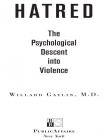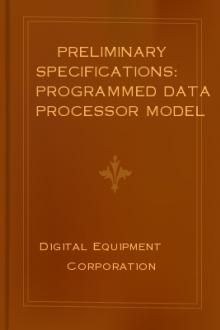Hatred, Willard Gaylin [best ebook for manga txt] 📗

- Author: Willard Gaylin
Book online «Hatred, Willard Gaylin [best ebook for manga txt] 📗». Author Willard Gaylin
Identification, however, does not mean that we cannot reject aspects of our parents’ personalities. Rebellion and self-assertion are also a part of the growing-up process. In an elementary school every child “votes” the way his parents do. By high school one will find Democratic children of Republican parents, indicating both adolescent revolt and independent thinking. When a child insists on behaving in complete opposition to his parents, the behavior is a perverse form of dependency. Dependence can be expressed in defiance as well as obedience. When a child does something just because her parent objects, the parent is still the determinant in her behavior.
For the most part, even after allowing for rebellion and true independence, we retain more of the parents within us than we like to admit. This helps to explain the “hereditary” nature of personality—why Japanese children tend to grow up and behave like Japanese, whereas Swedish children persist in behaving like Swedes. It certainly explains the culture shock many of us feel on first being exposed to a culture significantly different from our own.
When we identify in this way, we are not only likely to talk, walk, dress in the manner of those with whom we have identified, but of more significance, we will tend to reason and think like them. We adopt not only the manners but also the mind-set of those with whom we identify, and we do it wholesale.
An admiration for certain traits sets a standard for a revulsion against others. Almost a century after the great massacres, Armenians—whose grandparents may have only known about the tragedy from second-hand sources—harbor an intrinsic distrust, even hatred, of the Turks. I am not offering this phenomenon as a universal finding, but its persistence even fractionally in a population four or five generations removed from the event is a tribute to the powers of identification.
The 2002 Nobel laureate in literature, Imre Kertesz, said in an interview: “My Judaism is very problematic. I am a nonbelieving Jew. Yet as a Jew I was taken to Auschwitz, as a Jew I was in the death camps and as a Jew I live in a society that does not like Jews.” He felt that to a large extent his Jewishness was “imposed” on him. Still, when he visited Israel, he was surprised by the power of his identification: “I am not impartial and, moreover, cannot be. I have never assumed the role of impartial executioner. I leave that to European—and non-European—intellectuals who embrace this role for better and often for worse. They have never bought a ticket for a bus ride from Jerusalem to Haifa.”52
The power of identification places a great burden on the leadership of major populations, whether on the national or religious scene. Group identification often depends upon the existence of an other, an outside, nonbelonging population. By setting an alien population outside the moral community, the leaders lay the groundwork for possible stigmatization and demonization of the other. The hatred of the Serbs for the Croats was inflamed by the active cooperation of the Croats with the Nazis. But the hostility between these two groups extended back to the Byzantine world, which separated the Greek Orthodox from the Roman Catholics. Since the split dates from the synod of Photius in 867 A.D., it is centuries before the life and personal memory of any living relatives. This hostility had to be abetted by the attitudes of the churches themselves, which have a longer memory for differences than for shared ideals. Certainly nothing was done within the institutions of the two churches to minimize the distinctions and mitigate the sense of alienation of these two closely related populations.
Under the iron rule of Tito, the newly founded state of Yugoslavia forged a union of groups that had existed in isolated hostility for generations. But as has been said by many, Tito was both the first and the last Yugoslav, and with his death the cultural hostilities that lay dormant emerged in bloody assaults on the traditional “enemies.” These hatreds are symptoms based on nothing in the real world, but on something in the internal world of identities and enemies.
Can anyone pretend to distinguish the Irish Protestant from his Catholic equivalent in physical appearance, speech patterns, Irish traits, Celtic humor, or even cultural values? Only when the discussion turns to religious politics do the enmity and the differences emerge. In an Irish-American bar, no one has any idea whether the Callahan or Kelly with whom one is speaking is Catholic or Protestant. The same is true for the traveler in Northern Ireland. A person’s roots become apparent only when the discussion turns political. Then the degree of hatred that can emerge is nothing short of astonishing. These hatreds were sucked into the unconscious of the younger generations along with the wholesale adoption of the personae of the elders through the processes of identification. A channel for “inherited” hatred was created between parent and child.
The identification that I have just briefly discussed I have labeled “upward identification.” That is not necessarily the most elegant term, but it is one that serves to contrast it with another and somewhat different form of identification called, naturally, “downward identification,” with which I will compare it. Downward identification is another thing entirely from the identification of the child with the parent.
What is one to make of the almost instant identification that the parent makes with the child at the moment of its birth? The experience I underwent on seeing my own children for the first time was an epiphany. It seemed more closely related to things I had read about than other experiences I could recall. It appeared much more akin to that instant bonding of a duckling for the first object it perceives moving than to traditional human modes of relating. Unlike friendship, which takes time to evolve; unlike love, which requires sharing, vulnerability, trust, and commitment—this had the quality of a mechanical or chemical reaction.
Why even call





Comments (0)